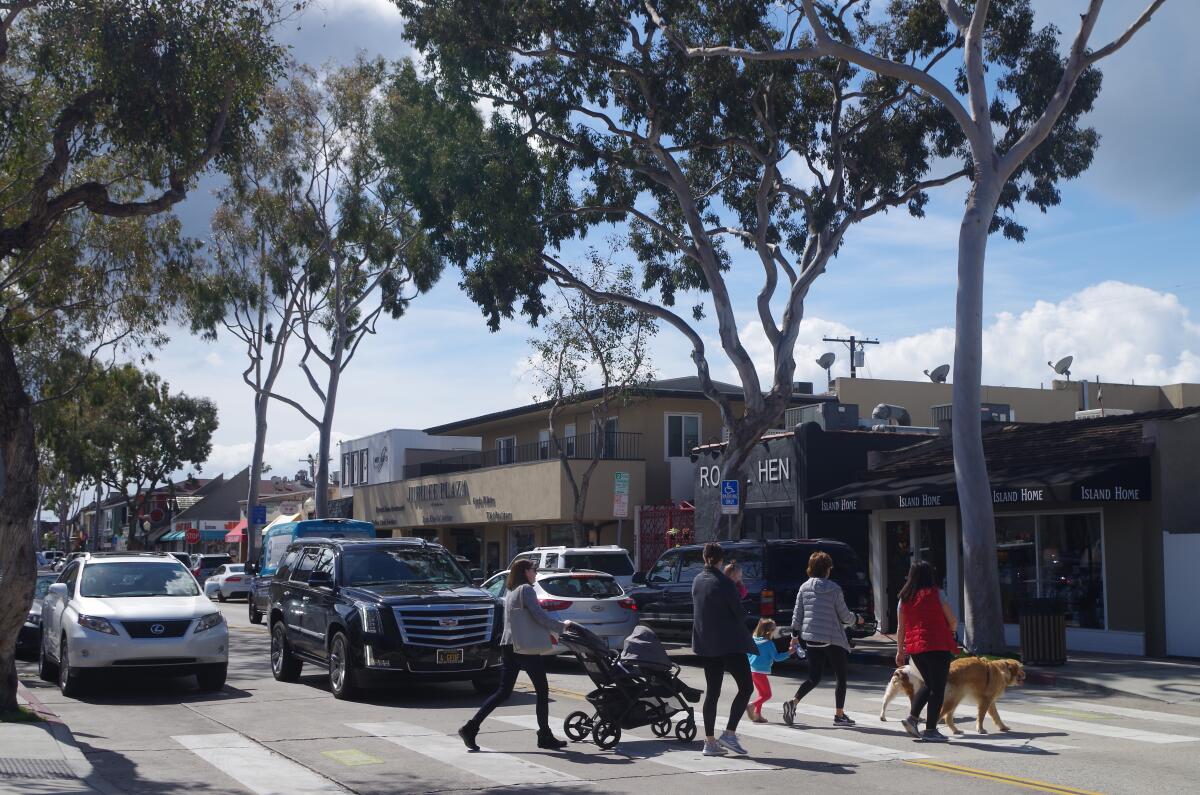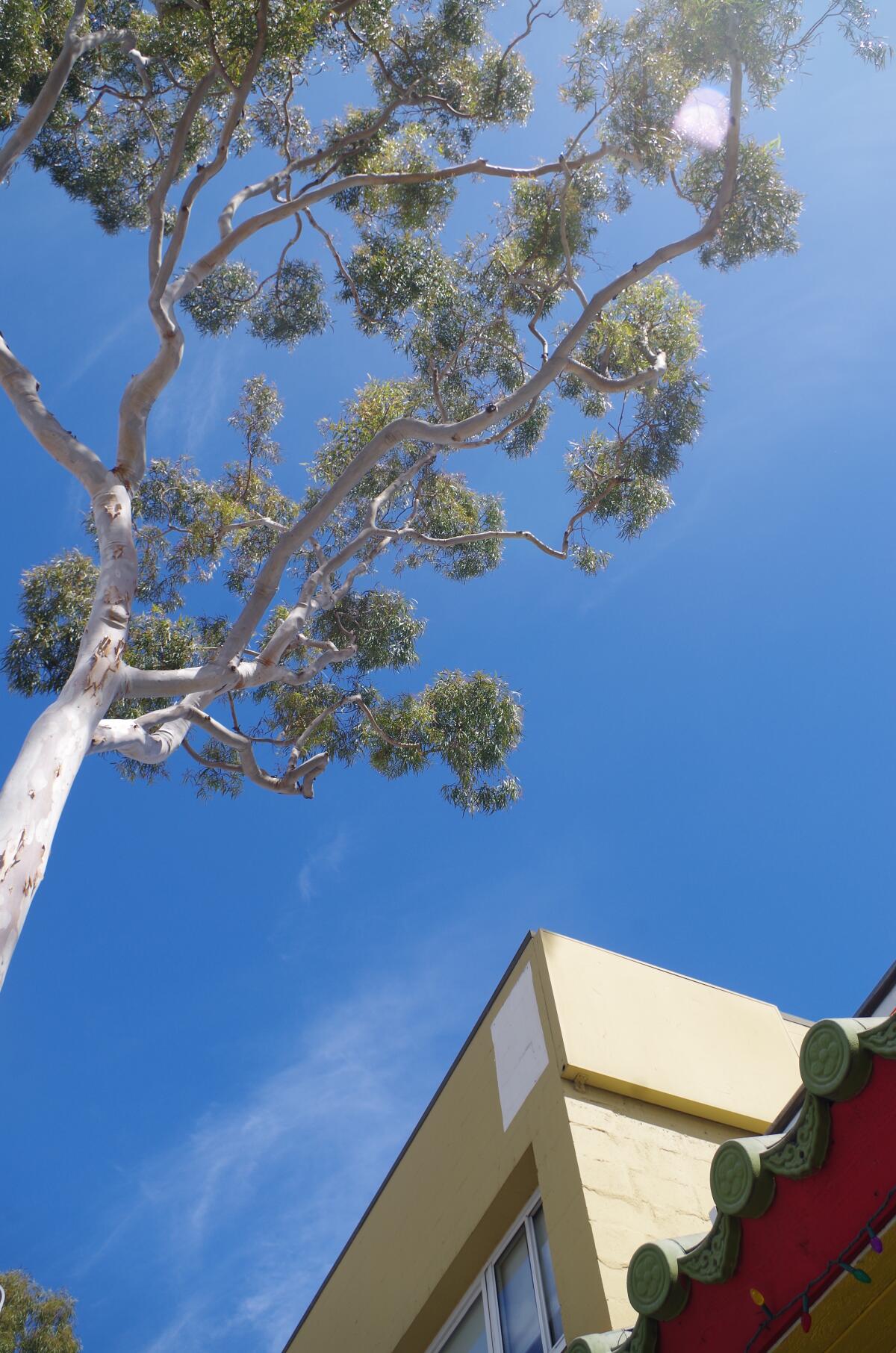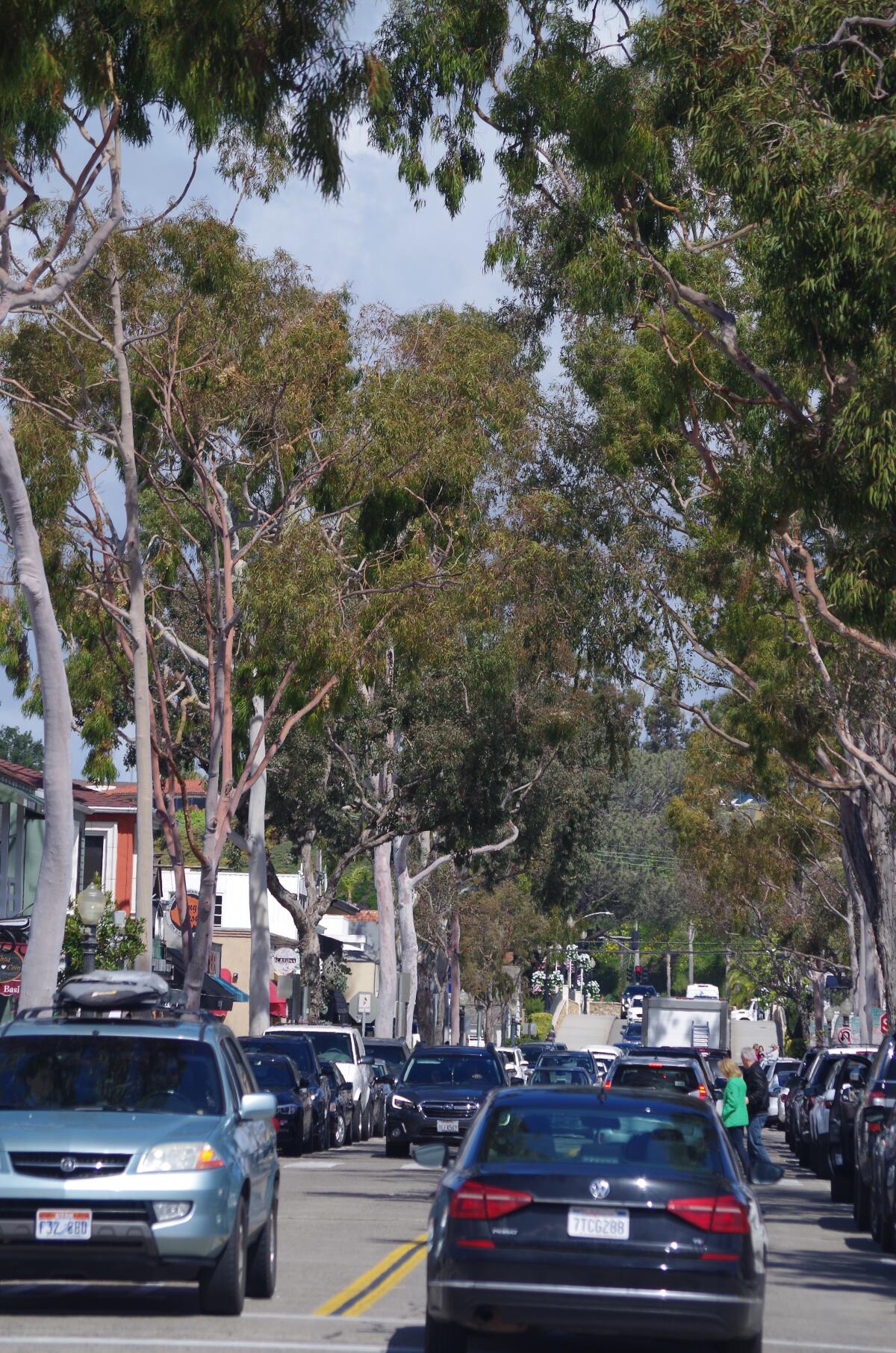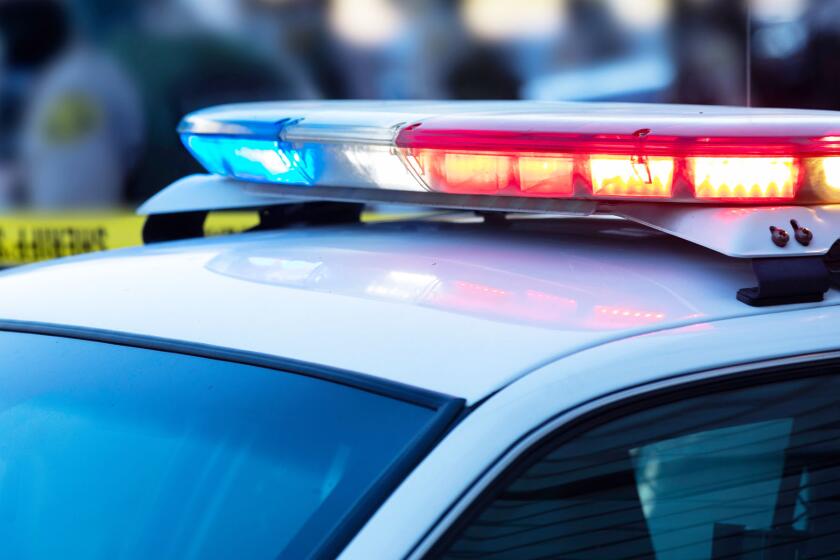Removal coming for some Balboa Island trees, testing for others

Four eucalyptus trees that arborists on both sides of a heated debate over Balboa Island tree removal agree are in the worst condition will be cut down this month.
Six additional trees along Marine Avenue that appear distressed will undergo advanced stability and health testing, and long-empty patches along the cozy boulevard of mom-and-pop shops and cafes will promptly be refilled with young eucalyptuses.
Also, three trees will be uprooted and replaced with eucalyptus specimens that better match the rest of the street forest.
The Newport Beach Parks, Beaches & Recreation Commission unanimously approved those actions after three hours of presentations and appeals Tuesday night, climaxing months of firmly rooted but varying professional and personal opinions on the state of Balboa Island’s iconic landscape. Some in the audience applauded the compromise, much of which city staff offered going into the meeting.
Jim Moloney, an island resident and attorney who represents the tree-advocating Balboa Island Preservation Assn., said city staff made as strong a case for removal as residents did for retention and testing.
He agreed that the trees in the worst shape should go, but said the city should slow down and be sure.
“Marine Avenue is our driveway,” Moloney said. “There are 1,800 homes on the island. There are 4,400 residents. And everybody who comes home drives over that bridge and sees those trees.”
Resident Mary Hardesty-Clayton has sold real estate on the island for 47 years. She first saw the island when she was 16 on a road trip with her brothers from their home in Oceanside. They wanted to see the Wedge but crested the Marine Avenue bridge first.
“We didn’t know where we were going and we ended up going over the bridge instead of around,” she said. “I came over that bridge and I just remember gasping, ‘Oh my God, who gets to live in a place like this?’ About three years later I was a resident of Balboa Island.”

The commission, which typically handles public tree removal and replanting requests, settled with the city in-house arborist’s take on which trees should be in their final days. The four trees deemed to be damaged, decaying and in the worst condition of the 40 that shade Marine Avenue are outside the Basilic Restaurant, the Balboa Island Museum, Starbucks and Abrams Coastal Properties. The one at Abrams is apparently dead.
If the six trees being tested show decay, they will be culled around January.
Spaces left by removed trees and those already empty will be filled with young eucalyptuses standing about 8 to 10 feet tall. That includes the three healthy but misfit trees — a gingko biloba, an African tulip and a water gum.
Greg Applegate, one of three arborists retained by the Balboa Island Preservation Assn., said the city’s approach sounded more like mass removal than maintenance. He had recommended that only three of the four decaying trees come down.
“All trees age, and they do age faster in small cutouts in the sidewalk,” he said. “However, a much slower replacement program can be and should be used to keep the street safe but [tree] age-appropriate.”
He said the trees’ value justifies testing to extend and improve their lives.
His colleague Mark Porter, who also worked with the preservation association, put numbers on the value: about $15,000 per tree based on their average diameter of 15 inches, using a guide from the Council of Tree and Landscape Appraisers. That would come to about $600,000 for the whole stand.
“These trees are very, very precious,” Porter said.
The predominant species on the street is lemon-scented gum. Blue gums — which are not on Marine Avenue — are more of a threat, Applegate said. They tend to fail at the limbs and the roots, which are shallow and small relative to the trees’ height. A blue gum that collapsed suddenly in 2011 killed a motorist stopped at a red light on Irvine Avenue near the Newport Beach-Costa Mesa border.

Jodi Boles, a preservation association co-founder, said that, contrary to staff insistence, the trees’ fate is not separate from a plan floated by the city and a group of Marine Avenue merchants to replenish the street’s infrastructure and appearance.
“Our community has paid over $8,000 for independent reports, consulting and various tests” on the Marine trees in general, she said. “We did — the community, not the city — and everything points to these trees are healthy.”
George Gonzales, a consulting arborist who assisted an outside expert working with the city, said the risk of tree failure is not exaggerated, based on the standards followed by urban foresters who specialize in public municipal trees.
Though the lives of individual trees are finite, urban forests can live indefinitely if managed correctly, he said.
“If you spend all of your energy protecting individual trees for as long as you possibly can, your urban forest starts to decline,” he said.
He said urban forests need managers who can proactively remove and replenish trees and not wait for a dramatic clear-cut when there are no other options. Leaving aging trees in place means loading the forest with trees that will eventually crash in short succession, he added, to a few derisive snorts from the audience.
“The people that planted these trees are not alive today; we are beneficiaries of the foresight those people had,” Gonzales said. “What foresight are we going to have? What are we going to leave our children? Are we going to wait until these trees all fail? Because that’s what’s going to happen.”
The next generation of trees will be lemon-scented gums.
All the latest on Orange County from Orange County.
Get our free TimesOC newsletter.
You may occasionally receive promotional content from the Daily Pilot.




